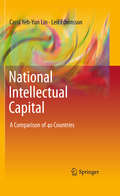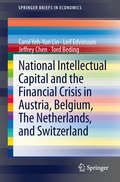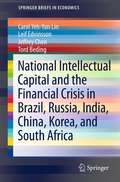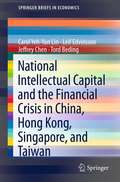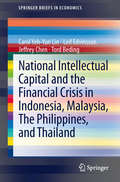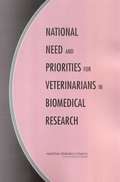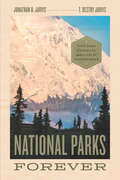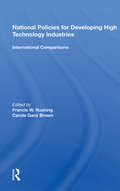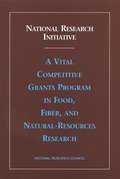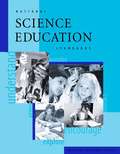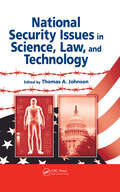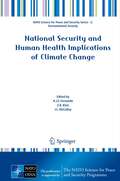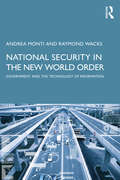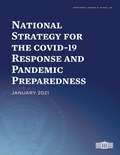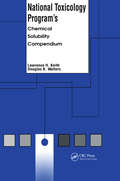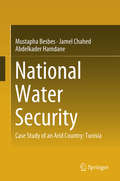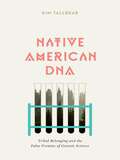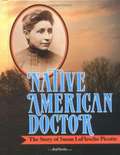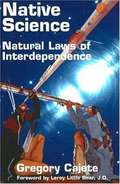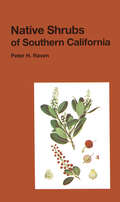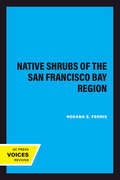- Table View
- List View
National Intellectual Capital
by Leif Edvinsson Carol Yeh-Yun LinOver the past decade, knowledge assets and intellectual capital have been attracting an increasing amount of attention, not only from academics and CEOs, but also from national policy makers. To date, most studies of intellectual capital have focused at the organizational level, with an emphasis on explaining the role of "intangible assets" as a differentiator between accounting value and market value as a possible source of corporate competitive advantage. More recently, pioneers in the field, including the authors of this book, have begun to apply these methodologies to a broader scope, with the objective of comparing the intellectual capital indices at the national or regional level. As a result, an increasing number of world organizations and researchers are commissioned to investigate this future-oriented crucial national issue. Yet, the linkage between the value of intangible assets and how to quantify or benchmark it is still tenuous, not to mention easily misunderstood by a layman for guiding better decision making. With the belief that numbers talk and statistics hide valuable information, this book serves to present the authors' research findings, covering 14 years (1995-2008) of intellectual capital information, comprised of human capital, market capital, process capital, renewal capital, and financial capital for 40 countries. The last three chapters go beyond analysis of current intellectual capital factors, and present practical tools for launching initiatives at the national level. The book will serve as an essential resource for researchers, policy makers, and business leaders concerned with issues of economic growth and competitiveness, innovation, and business creation.
National Intellectual Capital and the Financial Crisis in Austria, Belgium, the Netherlands, and Switzerland
by Leif Edvinsson Carol Yeh-Yun Lin Tord Beding Jeffrey ChenIn the first decade of the twenty-first century, the biggest event of worldwide proportion was the 2008 global financial crisis, which was caused primarily by ineffective governance, failed surveillance systems, and implementation flaws. While fiscal and monetary policies succeeded in pulling many countries out of a financial freefall, most economies have performed beneath pre-recession levels as governments continued to struggle with their finances. Examining the financial crisis from the viewpoint of intangible assets provides a different perspective from traditional economic approaches. National Intellectual Capital (NIC), comprised mainly of human capital, market capital, process capital, renewal capital, and financial capital, is a valuable intangible asset and a key source of national competitive advantage in today's knowledge economy. The authors--pioneers in the field--present extensive data and a rigorous conceptual framework to analyze the connections between the global financial crisis and NIC development. Covering the period from 2005 to 2010 across 48 countries, the authors establish a positive correlation between NIC and GDP per capita and consider the impact of NIC investment for short-term recovery and long-term risk control and strategy formulation. Each volume in a series of SpringerBriefs on NIC and the financial crisis provides in-depth coverage of the impact of the crisis, the aftermath, future prospects, and policy implications for a regional cluster. This volume focuses on Austria, Belgium, the Netherlands, and Switzerland.
National Intellectual Capital and the Financial Crisis in Brazil, Russia, India, China, Korea, and South Africa
by Leif Edvinsson Carol Yeh-Yun Lin Tord Beding Jeffrey ChenIn the first decade of the twenty-first century, the biggest event of worldwide proportion was the 2008 global financial crisis, which was caused primarily by ineffective governance, failed surveillance systems, and implementation flaws. While fiscal and monetary policies succeeded in pulling many countries out of a financial freefall, most economies have performed beneath pre-recession levels as governments continued to struggle with their finances. Examining the financial crisis from the viewpoint of intangible assets provides a different perspective from traditional economic approaches. National Intellectual Capital (NIC), comprised mainly of human capital, market capital, process capital, renewal capital, and financial capital, is a valuable intangible asset and a key source of national competitive advantage in today's knowledge economy. The authors--pioneers in the field--present extensive data and a rigorous conceptual framework to analyze the connections between the global financial crisis and NIC development. Covering the period from 2005 to 2010 across 48 countries, the authors establish a positive correlation between NIC and GDP per capita and consider the impact of NIC investment for short-term recovery and long-term risk control and strategy formulation. Each volume in a series of SpringerBriefs on NIC and the financial crisis provides in-depth coverage of the impact of the crisis, the aftermath, future prospects, and policy implications for a regional cluster. This volume focuses on the BRICKS--Brazil, Russia, India, China, Korea, and South Africa.
National Intellectual Capital and the Financial Crisis in China, Hong Kong, Singapore, and Taiwan
by Leif Edvinsson Carol Yeh-Yun Lin Tord Beding Jeffrey ChenIn the first decade of the twenty-first century, the biggest event of worldwide proportion was the 2008 global financial crisis, which was caused primarily by ineffective governance, failed surveillance systems, and implementation flaws. While fiscal and monetary policies succeeded in pulling many countries out of a financial freefall, most economies have performed beneath pre-recession levels as governments continued to struggle with their finances. Examining the financial crisis from the viewpoint of intangible assets provides a different perspective from traditional economic approaches. National Intellectual Capital (NIC), comprised mainly of human capital, market capital, process capital, renewal capital, and financial capital, is a valuable intangible asset and a key source of national competitive advantage in today's knowledge economy. The authors--pioneers in the field--present extensive data and a rigorous conceptual framework to analyze the connections between the global financial crisis and NIC development. Covering the period from 2005 to 2010 across 48 countries, the authors establish a positive correlation between NIC and GDP per capita and consider the impact of NIC investment for short-term recovery and long-term risk control and strategy formulation. Each volume in a series of SpringerBriefs on NIC and the financial crisis provides in-depth coverage of the impact of the crisis, the aftermath, future prospects, and policy implications for a regional cluster. This volume focuses on China, Hong Kong, Singapore, and Taiwan.
National Intellectual Capital and the Financial Crisis in France, Germany, Ireland, and the United Kingdom
by Leif Edvinsson Carol Yeh-Yun Lin Tord Beding Jeffrey ChenIn the first decade of the twenty-first century, the biggest event of worldwide proportion was the 2008 global financial crisis, which was caused primarily by ineffective governance, failed surveillance systems, and implementation flaws. While fiscal and monetary policies succeeded in pulling many countries out of a financial freefall, most economies have performed beneath pre-recession levels as governments continued to struggle with their finances. Examining the financial crisis from the viewpoint of intangible assets provides a different perspective from traditional economic approaches. National Intellectual Capital (NIC), comprised mainly of human capital, market capital, process capital, renewal capital, and financial capital, is a valuable intangible asset and a key source of national competitive advantage in today's knowledge economy. The authors--pioneers in the field--present extensive data and a rigorous conceptual framework to analyze the connections between the global financial crisis and NIC development. Covering the period from 2005 to 2010 across 48 countries, the authors establish a positive correlation between NIC and GDP per capita and consider the impact of NIC investment for short-term recovery and long-term risk control and strategy formulation. Each volume in a series of SpringerBriefs on NIC and the financial crisis provides in-depth coverage of the impact of the crisis, the aftermath, future prospects, and policy implications for a regional cluster. This volume focuses on France, Germany, Ireland, and the United Kingdom.
National Intellectual Capital and the Financial Crisis in Greece, Italy, Portugal, and Spain
by Leif Edvinsson Carol Yeh-Yun Lin Tord Beding Jeffrey ChenIn the first decade of the twenty-first century, the biggest event of worldwide proportion was the 2008 global financial crisis, which was caused primarily by ineffective governance, failed surveillance systems, and implementation flaws. While fiscal and monetary policies succeeded in pulling many countries out of a financial freefall, most economies have performed beneath pre-recession levels as governments continued to struggle with their finances. Examining the financial crisis from the viewpoint of intangible assets provides a different perspective from traditional economic approaches. National Intellectual Capital (NIC), comprised mainly of human capital, market capital, process capital, renewal capital, and financial capital, is a valuable intangible asset and a key source of national competitive advantage in today's knowledge economy. The authors--pioneers in the field--present extensive data and a rigorous conceptual framework to analyze the connections between the global financial crisis and NIC development. Covering the period from 2005 to 2010 across 48 countries, the authors establish a positive correlation between NIC and GDP per capita and consider the impact of NIC investment for short-term recovery and long-term risk control and strategy formulation. Each volume in a series of SpringerBriefs on NIC and the financial crisis provides in-depth coverage of the impact of the crisis, the aftermath, future prospects, and policy implications for a regional cluster. This volume focuses on Greece, Italy, Portugal, and Spain.
National Intellectual Capital and the Financial Crisis in Indonesia, Malaysia, The Philippines, and Thailand
by Leif Edvinsson Carol Yeh-Yun Lin Tord Beding Jeffrey ChenIn the first decade of the twenty-first century, the biggest event of worldwide proportion was the 2008 global financial crisis, which was caused primarily by ineffective governance, failed surveillance systems, and implementation flaws. While fiscal and monetary policies succeeded in pulling many countries out of a financial freefall, most economies have performed beneath pre-recession levels as governments continued to struggle with their finances. Examining the financial crisis from the viewpoint of intangible assets provides a different perspective from traditional economic approaches. National Intellectual Capital (NIC), comprised mainly of human capital, market capital, process capital, renewal capital, and financial capital, is a valuable intangible asset and a key source of national competitive advantage in today's knowledge economy. The authors--pioneers in the field--present extensive data and a rigorous conceptual framework to analyze the connections between the global financial crisis and NIC development. Covering the period from 2005 to 2010 across 48 countries, the authors establish a positive correlation between NIC and GDP per capita and consider the impact of NIC investment for short-term recovery and long-term risk control and strategy formulation. Each volume in a series of SpringerBriefs on NIC and the financial crisis provides in-depth coverage of the impact of the crisis, the aftermath, future prospects, and policy implications for a regional cluster. This volume focuses on Indonesia, Malaysia, The Philippines, and Thailand.
National Intellectual Capital and the Financial Crisis in Israel, Jordan, South Africa, and Turkey
by Leif Edvinsson Carol Yeh-Yun Lin Tord Beding Jeffrey ChenIn the first decade of the twenty-first century, the biggest event of worldwide proportion was the 2008 global financial crisis, which was caused primarily by ineffective governance, failed surveillance systems, and implementation flaws. While fiscal and monetary policies succeeded in pulling many countries out of a financial freefall, most economies have performed beneath pre-recession levels as governments continued to struggle with their finances. Examining the financial crisis from the viewpoint of intangible assets provides a different perspective from traditional economic approaches. National Intellectual Capital (NIC), comprised mainly of human capital, market capital, process capital, renewal capital, and financial capital, is a valuable intangible asset and a key source of national competitive advantage in today's knowledge economy. The authors--pioneers in the field--present extensive data and a rigorous conceptual framework to analyze the connections between the global financial crisis and NIC development. Covering the period from 2005 to 2010 across 48 countries, the authors establish a positive correlation between NIC and GDP per capita and consider the impact of NIC investment for short-term recovery and long-term risk control and strategy formulation. Each volume in a series of SpringerBriefs on NIC and the financial crisis provides in-depth coverage of the impact of the crisis, the aftermath, future prospects, and policy implications for a regional cluster. This volume focuses on Israel, Jordan, South Africa, and Turkey.
National Need And Priorities For Veterinarians In Biomedical Research
by Committee on Increasing Veterinary Involvement in Biomedical ResearchThe report identified various factors which contributed to creating an unfulfilled need for veterinarians in the biomedical research workforce, including an increase in the number of NIH grants utilizing animals and the burgeoning use of transgenic rodents, without a comparable change in the supply of appropriately-trained veterinarians. The committee developed strategies for recruiting more veterinarians into careers in biomedical research.
National Parks Forever: Fifty Years of Fighting and a Case for Independence
by Jonathan B. Jarvis T. Destry JarvisTwo leaders of the National Park Service provide a front-row seat to the disastrous impact of partisan politics over the past fifty years—and offer a bold vision for the parks’ future. The US National Parks, what environmentalist and historian Wallace Stegner called America’s “best idea,” are under siege. Since 1972, partisan political appointees in the Department of the Interior have offered two conflicting views of the National Park Service (NPS): one vision emphasizes preservation and science-based decision-making, and another prioritizes economic benefits and privatization. These politically driven shifts represent a pernicious, existential threat to the very future of our parks. For the past fifty years, brothers Jonathan B. and T. Destry Jarvis have worked both within and outside NPS as leaders and advocates. National Parks Forever interweaves their two voices to show how our parks must be protected from those who would open them to economic exploitation, while still allowing generations to explore and learn in them. Their history also details how Congress and administration appointees have used budget and staffing cuts to sabotage NPS’s ability to manage the parks and even threatened their existence. Drawing on their experience, Jarvis and Jarvis make a bold and compelling proposal: that it is time for NPS to be removed from the Department of the Interior and made an independent agency, similar to the Smithsonian Institution, giving NPS leaders the ability to manage park resources and plan our parks’ protection, priorities, and future.
National Policies For Developing High Technology Industries: International Comparisons
by Francis W. Rushing Carole Ganz BrownThis book discusses the informatics industry in Brazil, France, India, Japan, Korea, Mexico, Taiwan, and the U.S., as models to examine the role of governments in promoting advanced technology. It considers the long-range policy analysis and evaluation necessary for fostering competitive industry.
National Research Initiative: A Vital Competitive Grants Program In Food, Fiber, And Natural-resources Research
by National Research CouncilThe National Academies Press (NAP)--publisher for the National Academies--publishes more than 200 books a year offering the most authoritative views, definitive information, and groundbreaking recommendations on a wide range of topics in science, engineering, and health. Our books are unique in that they are authored by the nation's leading experts in every scientific field.
National Science Education Standards
by National Research Council StaffAmericans agree that our students urgently need better science education. But what should they be expected to know and be able to do? Can the same expectations be applied across our diverse society? These and other fundamental issues are addressed in National Science Education Standards--a landmark development effort that reflects the contributions of thousands of teachers, scientists, science educators, and other experts across the country. The National Science Education Standards offer a coherent vision of what it means to be scientifically literate, describing what all students regardless of background or circumstance should understand and be able to do at different grade levels in various science categories. The standards address: The exemplary practice of science teaching that provides students with experiences that enable them to achieve scientific literacy. Criteria for assessing and analyzing students' attainments in science and the learning opportunities that school science programs afford. The nature and design of the school and district science program. The support and resources needed for students to learn science. These standards reflect the principles that learning science is an inquiry-based process, that science in schools should reflect the intellectual traditions of contemporary science, and that all Americans have a role in improving science education. This document will be invaluable to education policymakers, school system administrators, teacher educators, individual teachers, and concerned parents.
National Security Issues in Science, Law, and Technology
by Thomas A. JohnsonUsing the best scientific decision-making practices, this book introduces the concept of risk management and its application in the structure of national security decisions. It examines the acquisition and utilization of all-source intelligence and addresses reaction and prevention strategies applicable to chemical, biological, and nuclear weapons; agricultural terrorism; cyberterrorism; and other potential threats to our critical infrastructure. It discusses legal issues and illustrates the dispassionate analysis of our intelligence, law enforcement, and military operations and actions. The book also considers the redirection of our national research and laboratory system to investigate weapons we have yet to confront.
National Security and Human Health Implications of Climate Change
by Harindra Joseph Fernando J. L. Mcculley Z. B. KlaićClimate change has been identified as one of the greatest threats to humanity of all times. In addition to producing adverse environmental conditions such as rising sea level, drought, crop failure, vector-borne diseases, extreme events, degradation of water/air quality and heat waves, climate change is also considered a threat multiplier that leads to local and international conflicts and armed interventions. Urban areas may bear the brunt of climate change, as they are the centers of human habitation, anthropogenic stressors and environmental degradation, and the ensuing health impacts are of grave societal concern. The papers in this volume span a suite of climate change repercussions, paying particular attention to national security and human health aspects. It is an outcome of a NATO Advanced Research Workshop held during April 28-30, 2011 in Dubrovnik, Croatia, sponsored by the NATO Science for Peace and Security Program. The contributions cut across the elements of modeling, natural, political and social sciences, engineering, politics, military intervention, urban planning, industrial activities, epidemiology and healthcare.
National Security in the New World Order: Government and the Technology of Information
by Raymond Wacks Andrea MontiThis important new book explores contemporary concerns about the protection of national security. It examines the role, influence, and impact of Big Tech on politics, power, and individual rights. The volume considers the manner in which digital technology and its business models have shaped public policy and charts its future course. In this vital text for legislators and policymakers, Andrea Monti and Raymond Wacks draw on several case studies to analyse the changing nature of national security and revisit the traditional idea of the sovereignty of the State. They highlight some of the limitations of the conventional understanding of public policy, national security, and the rule of law to reveal the role of digital technology as an enabler as well as discriminator in governance and social disorder. Further, the chapters in the book explore the tenuous balance between individual freedom and national security; the key role of data protection in safeguarding digital data; Big Tech’s appropriation of national security policy; the debate relating to datagathering technologies and encryption; and offers an unsettling answer to the question ‘what is a leak?’ A stimulating read, this key text will be of immense interest to scholars of politics, cyberculture, and national security, as well as to policy analysts, lawyers, and journalists.
National Strategy for the COVID-19 Response and Pandemic Preparedness: January 2021
by Joseph R. Biden, Jr.The ultimate guide for anyone wondering how President Joe Biden will respond to the COVID-19 pandemic—all his plans, goals, and executive orders in response to the coronavirus crisis. Shortly after being inaugurated as the 46th President of the United States, Joe Biden and his administration released this 200 page guide detailing his plans to respond to the coronavirus pandemic. The National Strategy for the COVID-19 Response and Pandemic Preparedness breaks down seven crucial goals of President Joe Biden's administration with regards to the coronavirus pandemic: 1. Restore trust with the American people. 2. Mount a safe, effective, and comprehensive vaccination campaign. 3. Mitigate spread through expanding masking, testing, data, treatments, health care workforce, and clear public health standards. 4. Immediately expand emergency relief and exercise the Defense Production Act. 5. Safely reopen schools, businesses, and travel while protecting workers. 6. Protect those most at risk and advance equity, including across racial, ethnic and rural/urban lines. 7. Restore U.S. leadership globally and build better preparedness for future threats. Each of these goals are explained and detailed in the book, with evidence about the current circumstances and how we got here, as well as plans and concrete steps to achieve each goal. Also included is the full text of the many Executive Orders that will be issued by President Biden to achieve each of these goals. The National Strategy for the COVID-19 Response and Pandemic Preparedness is required reading for anyone interested in or concerned about the COVID-19 pandemic and its effects on American society.
National Toxicology Program's Chemical Solubility Compendium
by Lawrence H. Keith Douglas B. WaltersThis book is a compilation of experimentally determined solubility ranges of over 1,700 compounds in the National Toxicology Program's Chemical Repository. Each compound's solubility was determined in a consistent manner in one to six solvents. Solvents chosen were those most commonly used for toxicology studies, spill cleanups, and chemical synthesis or chemical reaction experiments. These solvents include acetone, 95% ethanol, water, dimethyl sulfoxide, methanol, and toluene. Data for many of the research and industrial chemicals featured in this volume do not exist anywhere else. If you are a toxicologist, safety professional, industrial hygienist, or chemist, this book is a valuable reference tool you'll find yourself using every day.
National Water Security: Case Study Of An Arid Country: Tunisia
by Mustapha Besbes Jamel Chahed Abdelkader HamdaneThis book shows how the change of water paradigm has become urgent, and provides evidence for new policies that expand water balance to green and virtual water. The issue of water security concerns drinking water supply but also food safety, linked to agricultural policy. Both rain-fed and irrigated agriculture play complementary roles in food security, and the water issue implies a holistic view of water resources. This view constitutes the book's backstory. The reader will find original ideas that can be applied everywhere because the example of Tunisia is typically a basis to illustrate a universally prevalent situation. The book deals with other important issues: desalination, wastewater recycling, water quality, groundwater overdraft, water savings, governance, knowledge valuing, education, information: upgrading the whole water systems for the future implies emancipation of the whole society.
Nationaler GeoPark Ruhrgebiet (Geoparks)
by Volker Wrede Katrin SchüppelRohstoffland Ruhrgebiet – Geologie erleben Ungewöhnliche Landschaftsformen, Geotope, Gesteinsaufschlüsse, Quellen und Seen, Schauhöhlen und Besucherbergwerke, Wanderwege und Museen zeigen uns die Vielgestaltigkeit der Landschaften und führen zu den spannendsten Kapiteln der Erdgeschichte. Geoparks präsentieren und erklären die geologischen Sehenswürdigkeiten und laden Besucher ein, diese hautnah zu erleben. Der Nationale GeoPark Ruhrgebiet ist europaweit der einzige Geopark in einem Ballungsraum und präsentiert sich seinen Besuchern außergewöhnlich abwechslungsreich: als Fenster in eine Welt vielfältiger Landschaftsformen, die Geschichten des Bergbaus erzählen und durchsetzt sind von alten Steinbrüchen, Industriedenkmälern, Stollen und Höhlen und damit eine einzigartige Stadt-an-Stadt-Landschaft mit montanindustrieller Vergangenheit prägen. Neben städtischen, auf der Montanindustrie gegründeten Kulturstätten und Freizeiträumen bietet der GeoPark Ruhrgebiet auch ländlich geprägte Erholung in idyllischen Aue-, Wald- und Heidelandschaften an. Eine Vielfältigkeit und Abwechslung, die es zu entdecken gilt! Dieser Reiseführer hilft Ihnen dabei und richtet sich an jeden, der geowissenschaftlich interessiert ist und plant, in die Geologie und Landschaftsentwicklung des Ruhrgebietes abzutauchen. Detaillierte und praktische Informationen und Hinweise erleichtern den Besuch und runden das Erlebnis ab. Gehen Sie auf Entdeckungstour in die Geologie des Ruhrgebietes und erleben Sie die Erdgeschichte der rohstofflich bedeutendsten Region Deutschlands.
Native American DNA: Tribal Belonging and the False Promise of Genetic Science
by Kim TallBearWho is a Native American? And who gets to decide? From genealogists searching online for their ancestors to fortune hunters hoping for a slice of casino profits from wealthy tribes, the answers to these seemingly straightforward questions have profound ramifications. The rise of DNA testing has further complicated the issues and raised the stakes.In Native American DNA, Kim TallBear shows how DNA testing is a powerful—and problematic—scientific process that is useful in determining close biological relatives. But tribal membership is a legal category that has developed in dependence on certain social understandings and historical contexts, a set of concepts that entangles genetic information in a web of family relations, reservation histories, tribal rules, and government regulations. At a larger level, TallBear asserts, the &“markers&” that are identified and applied to specific groups such as Native American tribes bear the imprints of the cultural, racial, ethnic, national, and even tribal misinterpretations of the humans who study them. TallBear notes that ideas about racial science, which informed white definitions of tribes in the nineteenth century, are unfortunately being revived in twenty-first-century laboratories. Because today&’s science seems so compelling, increasing numbers of Native Americans have begun to believe their own metaphors: &“in our blood&” is giving way to &“in our DNA.&” This rhetorical drift, she argues, has significant consequences, and ultimately she shows how Native American claims to land, resources, and sovereignty that have taken generations to ratify may be seriously—and permanently—undermined.
Native American Doctor: The Story of Susan Laflesche Picotte
by Jeri Chase FerrisA biography of the young Omaha Indian woman who became the first Native American woman to graduate from medical school.
Native Science: Natural Laws of Interdependence
by Gregory CajeteCajete examines the multiple levels of meaning that inform Native astronomy, cosmology, psychology, agriculture, and the healing arts. Unlike the western scientific method, native thinking does not isolate an object or phenomenon in order to understand it, but perceives it in terms of relationship. An understanding of the relationships that bind together natural forces and all forms of life has been fundamental to the ability of indigenous peoples to live for millennia in spiritual and physical harmony with the land. It is clear that the first peoples offer perspectives that can help us work toward solutions at this time of global environmental crisis.
Native Shrubs of Southern California (California Natural History Guides #15)
by Peter H. RavenSouthern California, with its valleys, high mountains and deserts, is exceptionally rich in native shrubs. Within this richly diversified area grow approximately 400 kinds of shrubs, and the great majority of them are mentioned in this book, which includes both color and black and white illustrations.
Native Shrubs of the San Francisco Bay Region (California Natural History Guides #24)
by Roxana S. FerrisThis title is part of UC Press's Voices Revived program, which commemorates University of California Press’s mission to seek out and cultivate the brightest minds and give them voice, reach, and impact. Drawing on a backlist dating to 1893, Voices Revived makes high-quality, peer-reviewed scholarship accessible once again using print-on-demand technology. This title was originally published in 1968.
